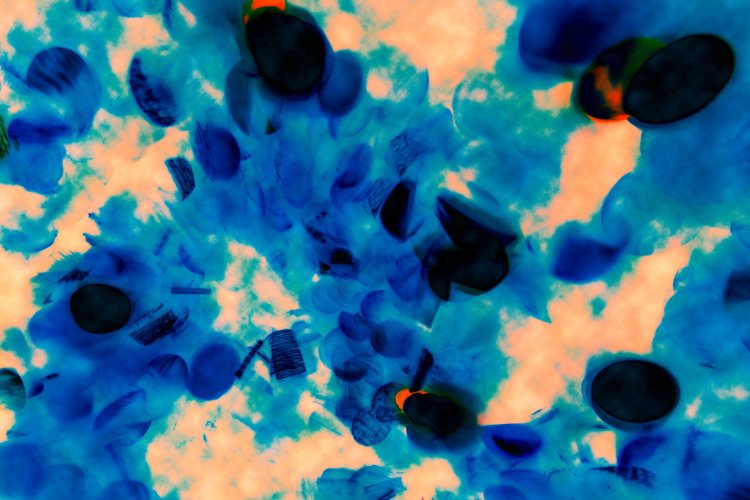Can art be scientific? And what does that even mean? In art, things that are incompatible at first glance can often be mixed, which sometimes gives rise to unexpected masterpieces. A popular art practice called BioArt, or science art, deals with living tissues, bacteria, organisms, life processes, and even entire ecosystems; the main way of artistic expression in BioArt is living matter. Imagine a picture painted with the help of microorganisms or clothes made of E. coli. Although… why imagine? In this article, we will talk about what BioArt is, and show the most striking examples.
Note. BioArt is a trend in contemporary art that originated in the 1990s. The term BioArt was coined in 1997 by the Brazilian-American artist and scientist Eduardo Kac, who believed that today’s art, in partnership with science, is able not just to display life, but to work directly with living tissues and life processes.
Petri dish as an art objectт
Perhaps the first known representative of BioArt was the British microbiologist Alexander Fleming, who discovered the antibacterial enzyme lysozyme produced by the human body, and for the first time isolated penicillin from the mold fungi Penicillium notatum – the first antibiotic in history (1928).
In his spare time, Fleming grew colonies of bacteria in such a way that they formed fancy patterns. Using the penicillin he discovered, the scientist separated bacteria with different pigments from each other. A petri dish with a nutrient medium served as a canvas, and microorganisms were paints.
Fleming intentionally grew microbes of different colors and experimented with patterns. The scientist even organized exhibitions with his bacteria but was not recognized by contemporary artists.
Today, “micro-painting” is already appreciated, and this type of art has even received a separate name – agar art. In 2015, the American Society for Microbiology organized the first international contest, Agar Art.
Clothing made of bacteria for space exploration
Neri Oxman, a well-known designer, architect, and professor of the Media Laboratory at the Massachusetts Institute of Technology, leads a research group on the mediated matter. The artist draws inspiration for her works from science. Together with her colleagues, Oxman created an unusual collection of clothes for interplanetary expeditions. The team presented clothing items printed on a 3D printer and filled with live photosynthetic cyanobacteria living in the ocean and E. coli. The exhibits are twisted tubes, measuring tens of meters, depicting the organs of the human body.
The symbiosis of humans and bacteria can become the clothing of the future, relevant for interplanetary expeditions. But what is the use of such clothing?
“Mushtari hosts synthetic microorganisms – a co-culture of photosynthetic cyanobacteria and E. coli bacteria – that can fluoresce bright colors in darkness and produce sugar or biofuels when exposed to the sun. Such functions will in the near future augment the wearer by scanning our skins, repairing damaged tissue, and sustaining our bodies […] Each wearable garment is designed for a specific extreme environment where it transforms elements that are found in the atmosphere to one of the classical elements supporting life: oxygen for breathing, photons for seeing, biomass for eating, biofuels for moving, and calcium for building,” told Neri Oxman during her TED talk.
Jellyfish lighting for rabbits
Eduardo Kac, a well-known artist, and Doctor of Philosophy at the University of Wales, who coined the term BioArt, experimented with plants, animals, and even with his own body.
One of Kac’s most famous experiments is related to rabbits. Having borrowed the gene responsible for the glow from the jellyfish, the man placed it in the zygote of a pregnant rabbit. The gene has successfully taken root and presented the world with unusual glowing green rabbits. The project called Alba has become widely known in the world.
Each year, more and more works inspired by science appear in the world. Modern technologies allow us to make even the most fantastic projects a reality. The most famous BioArt creators are the aforementioned Eduardo Kac, Stelarc with his Exoskeleton project, cyborg activist Neil Harbisson, Ken Rinaldo (author of the Augmented Fish Reality project), and many other adherents of the symbiosis of science and art from around the world.
Based on:
─ LIVING ART. BioArt [Digital Code]
─ BioArt: (semi)live technologies. Creativity in a lab
─ Wanderers: An Astrobiological Exploration: a new 3D-printed clothing line
Photo: rawpixel / 123RF






















